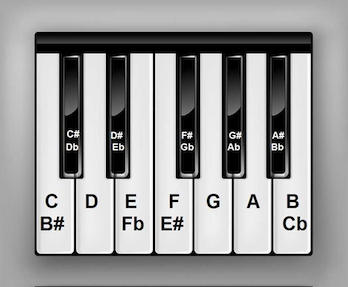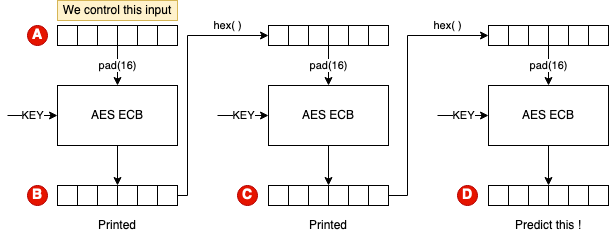A high quality CTF from The Few Chosen CTF team.
Dizzy
Embark on 'Dizzy', a carousel ride through cryptography! This warmup challenge spins you around the basics of ciphers and keys. Sharpen your mind, find the flag, and remember - in crypto, it's fun to get a little dizzy!
D = {}
for hint in "T4 l16 _36 510 _27 s26 _11 320 414 {6 }39 C2 T0 m28 317 y35 d31 F1 m22 g19 d38 z34 423 l15 329 c12 ;37 19 h13 _30 F5 t7 C3 325 z33 _21 h8 n18 132 k24".split(' '):
D[int(hint[1:])] = hint[:1]
print(''.join(D[k] for k in sorted(D.keys())))
Beautiful solve from user YeGo [yegorenji] on Discord.
import time
enc = 'T4 l16 _36 510 _27 s26 _11 320 414 {6 }39 C2 T0 m28 317 y35 d31 F1 m22 g19 d38 z34 423 l15 329 c12 ;37 19 h13 _30 F5 t7 C3 325 z33 _21 h8 n18 132 k24'
splitted = enc.split(' ')
for c in splitted:
char = c[0]
place = int(c[1:])
time.sleep(0.1)
print('\033[C' * (place) + char, end='')
print('\r', end='')
print()
Alien Music
We've intercepted an alien transmission that seems to be composed of sheet music notes. Our lead translator is tone-deaf, our pianist can't spell 'binary', and the guitarist keeps shouting 'hex' in his sleep! Can you help us decode the tune?
In Western music, there are a total of twelve notes per octave, named A, A#, B, C, C#, D, D#, E, F, F#, G and G#. The sharp notes, or ‘accidentals’, fall on the black keys, while the regular or ‘natural’ notes fall on the white keys.

tune = "DC# C#D# C#C C#C DC# C#D# E2 C#5 CA EC# CC DE CA EB EC# D#F EF# D6 D#4 CC EC EC CC# D#E CC E4"
KEYS="A,A#,B,C,C#,D,D#,E,F,F#,1,2,3,4,5,6".split(',')
VALS=[i for i in range(16)]
for c in tune.split(' '):
out=[]
for i,x in enumerate(c):
if (x == '#'):
out[-1]+=1
else:
out.append(VALS[KEYS.index(x)])
print( chr( int(f"{out[0]:x}{out[1]:x}",16) ), end='')
print()
Some Traffic
- File -> Export Objects -> HTTP -> select 3 multi-part/form-data objects
- trim the headers in each and store them as PNG files.
- Run
zsteg -aon each of the PNG files. - Get the flag from the
output_modified.pngfile.
b8,g,lsb,yx .. text: "FCCTF{H1dd3n_d4t4_1n_p1x3ls_i5n't_f4n_4nd_e4sy_to_f1nd!}TFCCTF{H1dd3n_d4t4_1n_p1x3ls_i5n't_f4n_4nd_e4sy_to_f1nd!}TFCCTF{H1dd3n_d4t4_1n_p1x3ls_i5n't_f4n_4nd_e4sy_to_f1nd!}TFCCTF{H1dd3n_d4t4_1n_p1x3ls_i5n't_f4n_4nd_e4sy_to_f1nd!}TFCCTF{H1dd3n_d4t4_1n_p1x3ls_"
Down Bad
root@stego:/input/2023/tfcctf/for# pngcheck -c -t -v down_bad.png
File: down_bad.png (2620079 bytes)
chunk IHDR at offset 0x0000c, length 13
1920 x 1168 image, 32-bit RGB+alpha, non-interlaced
CRC error in chunk IHDR (computed 1d9c52c0, expected a9d5455b)
ERRORS DETECTED in down_bad.png
root@stego:/input/2023/tfcctf/for# xxd -g 28 down_bad_original.png | more
00000000: 89504e470d0a1a0a0000000d49484452 .PNG........IHDR
00000010: 00000780000004900806000000a9d545 ...............E
00000020: 5b [
- We are given a PNG file which will not open due a CRC error in the IHDR chunk.
- Running
pngcheckon the image shows that image has a header that is coded to be 1920 x 1168 sized image, but has a CRC of0x1d9c52c0instead of the expected CRC of0xa9d5455b - The two alternatives here are that either the CRC is wrong or the IHDR data is incorrect.
- Since the height of the image is not any of the normal values, I chose to see if I can determine what height of the image would produce the expected CRC value.
- The following script tests the CRC for a IHDR chunk with by gradually increasing the height of the image.
- It is found that the image height of 1344 pixels produces the expected CRC value
- Updating the IHDR with this value and displaying the resulting image shows a taller image, with the flag at the bottom of the image.
from binascii import crc32, unhexlify
ihdr_a = "4948445200000780"
ihdr_b = "0806000000"
ht = 0x00000490
for h in range(ht, 0x780):
ihdr = f"{ihdr_a}{h:08x}{ihdr_b}" #create a new IHDR bytestream with the new height
crc = crc32(unhexlify(ihdr)) # calculate the CRC
if (crc == 0xa9d5455b): # If it matches the original CRC, we found the original height
print(f"{h:08x}: {ihdr} {crc32(unhexlify(ihdr)):x}") # 00000540 : 4948445200000780000005400806000000 a9d5455b
break
MCTEENX
I fly in the sky, I got wings on my feet.
% echo "#\!/bin/bash" | xxd -g0
00000000: 23212f62696e2f626173680a #!/bin/bash.
% bkcrack -x 0 23212f62696e2f626173680a -C red.zip -c script.sh
bkcrack 1.5.0 - 2022-07-07
[21:50:23] Z reduction using 5 bytes of known plaintext
100.0 % (5 / 5)
[21:50:23] Attack on 1218664 Z values at index 6
Keys: c0b1bc78 c3206dfc e7e5bae1
9.7 % (118324 / 1218664)
[21:53:44] Keys
c0b1bc78 c3206dfc e7e5bae1
% bkcrack -k c0b1bc78 c3206dfc e7e5bae1 -C red.zip -c script.sh -d script.sh
[21:56:23] Writing deciphered data script.sh (maybe compressed)
Wrote deciphered data.
% ./script.sh (creates red.png)
% zsteg -a red.png
...
b1,rgb,lsb,xy .. text: "030a111418142c783b39380d397c0d25293324231c66220d367d3c23133c6713343e343b3931"
...
XOR the hex string with the flag header to get the 3-character key. Then, get the full flag by XOR-ing the hex string with the key.
from pwn import *
b = unhex("030a111418142c783b39380d397c0d25293324231c66220d367d3c23133c6713343e343b3931")
print(xor(b, b'TFCCTF{')) # b'WLRWLRW,}z{Y\x7f\x07Ycjppeg2dNu)zXGz$P`xOo\x7fr'
print(xor(b, b'WLR')) # b'TFCCTF{4int_n0_reasoN1n_a1nt_n0_fixin}'
AES CTF Tool V1
- Make one-line change to main.py to return
remote("<server name>", port_num) - Run the program.
- This challenge implements CBC scheme, which is attacked using a Chosen Plaintext Attack
% python3 main.py
[INFO] Starting initial cryptanalysis.
[INFO] Determining block size.
[X] Found block size: 16.
[INFO] Determining block cipher category.
[X] Found block cipher category: ECB_CBC.
[INFO] Starting fingerprinting.
[INFO] Determining block cipher mode.
[X] Found block cipher mode: ECB.
======= Probabilities =======
ECB: 100%
CBC: 0%
CFB: 0%
OFB: 0%
CTR: 0%
=============================
[INFO] ECB/CBC detected. Determining padding method.
[X] Found padding method: Block.
[INFO] Fingerprinting complete.
Would you like to perform a Chosen Plaintext Attack? (Y/n)
Optimize search space for printable ascii? (Y/n)
[INFO] Starting Chosen Plaintext Attack.
Offset: 8 bytes
Block number: 7
Found: T
Found: TF
Found: TFC
...
...
Found: TFCCTF{gu355_th4t_w4s_345y...Wh4T-AboUt_Th3_0th3r_0n3
Found: TFCCTF{gu355_th4t_w4s_345y...Wh4T-AboUt_Th3_0th3r_0n3?
Found: TFCCTF{gu355_th4t_w4s_345y...Wh4T-AboUt_Th3_0th3r_0n3?}
[INFO] Chosen Plaintext Attack complete.
AES CTF Tool V2
- Make one-line change to main.py to return
remote("<server name>", port_num) - Run the program.
- This challenge implements CBC scheme, which is attacked using a Padding Oracle Attack
% python3 main_vol2.py
[INFO] Starting initial cryptanalysis.
[INFO] Determining block size.
[X] Found block size: 16.
[INFO] Determining block cipher category.
[X] Found block cipher category: ECB_CBC.
[INFO] Starting fingerprinting.
[INFO] Determining block cipher mode.
[X] Found block cipher mode: CBC.
======= Probabilities =======
CBC: 100%
ECB: 0%
CFB: 0%
OFB: 0%
CTR: 0%
=============================
[INFO] ECB/CBC detected. Determining padding method.
[X] Found padding method: Block+.
[INFO] Checking if the IV is reused for each encryption.
[INFO] Reuses IV: True.
[INFO] Fingerprinting complete.
Would you like to perform a Padding Oracle Attack? (Y/n)
[INFO] Starting Padding Oracle Attack.
Enter the ciphertext to decrypt (in hexadecimal): e7a7615846ca468d7bd0410f1004f9d131768b3f44c29cb9aff919f9ae6e122cd9ba37a00336910fd0abbccaba75e357a7119004a3036725147bd2b8ef5c12ae
...
...
Found byte: 163
Intermediate value: 179
Decrypted: b'TFCCTF{W3ll..._th15_0n3_w4s_4ls0_easy!}\t\t\t\t\t\t\t\t\t'
[INFO] Padding Oracle Attack complete.
CypherehpyC
from Crypto.Cipher import AES
from Crypto.Util.Padding import pad, unpad
KEY = b"redacted" * 2
FLAG = "redacted"
initial_cipher = bytes.fromhex(input("Initial HEX: ").strip())
cipher = AES.new(KEY, AES.MODE_ECB).encrypt(pad(initial_cipher, 16))
print(cipher.hex())
cipher = AES.new(KEY, AES.MODE_ECB).encrypt(pad(cipher, 16))
print(cipher.hex())
cipher = AES.new(KEY, AES.MODE_ECB).encrypt(pad(cipher, 16))
result = bytes.fromhex(input("Result HEX: ").strip())
if cipher == result:
print(FLAG)
else:
print("Not quite...")
As can be seen in the challenge source, we are allowed to supply a input which is encrypted twice (in AES-ECB mode) and we are asked to guess the output of the 3rd round of encryption to get the flag. AES ECB uses the same key and padding techniques for each block of data
Pictorially, the challenge looks like the following:

The solution is to start with any arbitrary input and solve the challenge in three tries. After the first try, use the output of step 1 as the input string. In the second try, save the output of step 2. This will be the final encrypted value that we can provide as our prediction. This approach works only because with ECB, the same key is used for encrypting each block.
| Try.step | Input | Output | |
|---|---|---|---|
| 1.1 | cafebabe | E(cafebabe) | <– use this in step 2.1 |
| 1.2 | E(cafebabe) | E(E(cafebabe)) | |
| 1.3 | E(E(cafebabe)) | Guess ? | |
| 2.1 | E(cafebabe) | E(E(cafebabe)) | |
| 2.2 | E(E(cafebabe)) | E(E(E(cafebabe))) | <– Use this in step 3.3 |
| 2.3 | E(E(E(cafebabe))) | Guess ? | |
| 3.1 | cafebabe | E(cafebabe) | |
| 3.2 | E(cafebabe) | E(E(cafebabe)) | |
| 3.3 | E(E(cafebabe)) | Guess: E(E(E(cafebabe))) | <– from 2.2 |
Writeups, Resources
- https://vnhacker.blogspot.com/2014/06/why-javascript-crypto-is-useful.html
- Challenge source : https://github.com/qLuma/TFC-CTF-2023
- Challenge source : https://github.com/tomadimitrie/tfcctf-2023-challenges
- https://github.com/woodruffw/steg86
- https://medium.com/@sachalraja/tfc-ctf-2023-writeups-52d7a1a44d0f
- https://toolscord.com/
- https://discord-avatar.com/en
- https://ireland.re/TheFewChosen_2023/
- https://nolliv22.com/categories/tfc-ctf-2023/
- https://xa21.netlify.app/tags/tfcctf-2023/
- https://github.com/JOvenOven/ctf-writeups/tree/main/TFC_CTF_2023
- https://xhacka.github.io/tags/tfcctf2023/
- https://yaytext.com/bold-italic/
- https://www.acceis.fr/cracking-encrypted-archives-pkzip-zip-zipcrypto-winzip-zip-aes-7-zip-rar/
Challenges
Category Difficulty Challenge Description Crypto warmup Dizzy re-order letters of the flag Crypto warmup Mayday! transcribe NATO phonetics and numbers Crypto medium AES CTF TOOL V1 Crypto medium AES CTF TOOL V2 Crypto medium CypherehpyC Crypto hard Fermentation Crypto easy Alien Music Music notes to hex digits Crypto easy Rabid misc warmup Rules misc medium Broken Crypto misc medium My First Calculator misc medium My Third Calculator misc hard mcclaustrophobia misc easy DISCORD SHENANIGANS V3 Flag in profile image, but cropped reverse warmup pass reverse medium Losedows reverse medium process-monitor reverse insane c3 reverse insane mcIOR reverse hard C - - reverse hard obf forensics warmup Down Bad Update height in IHDR to match CRC forensics medium Some traffic images in HTTP + zsteg forensics medium mcELLA forensics medium mcteenX bkcrack to crack a zip using bash header, zsteg, XOR with flag header to get the key forensics easy list pwn warmup diary pwn warmup shello-world pwn medium Pwn;Gate pwn medium notes pwn medium rusty pwn hard Inj pwn hard Mafia Login pwn easy easyrop pwn easy random web warmup Baby Ducky Notes web medium Ducky Notes: Part 3 web medium mctree web hard Ducky Notes: Endgame web easy Baby Ducky Notes: Revenge web easy Cookie Store
